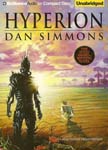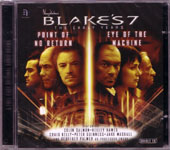
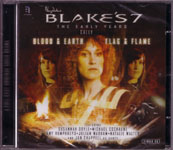
 Blake’s 7 – Cally: Blood & Earth / Flag & Flame (Vol. 1.4)
Blake’s 7 – Cally: Blood & Earth / Flag & Flame (Vol. 1.4)
By Ben Aaronovitch and Marc Platt; Directed by Dominic Devine; Performed by a full cast
1 CD – Approx. 60 Minutes [AUDIO DRAMA]
Publisher: B7 Productions
Published: August 24, 2009
ISBN: 9781906577070
Themes: / Science Fiction / Space Opera / Telepathy / Survival / Noir / War /
Blake’s 7 – Cally contains two plays on one CD. I am reviewing them individually and in the order they appear on the disc.
Blood & Earth
On Auron, every clone lives in a world buoyed by the constant murmur of telepathic support, gossip and opinions. When Ariane Cally’s plane crashes in the middle of a wilderness park she finds herself cut off not only from rescue, but the voices that have sustained her all her life. Her only hope is the mysterious Aunty, the single voice she can still hear, a woman who claims to have been the second Cally ever to be born on Auron. From Aunty she will learn the true and secret history of her people, but only if the wilderness doesn’t kill her first.
You’d think that any audio drama featuring four characters, three with the same and similar voices there’d be some difficulty in following the story of who’s talking to who, what’s happening and to whom. No such problems exist in Blood & Earth and neither does the story suffer in the telling. Jan Chappell, who was the original Cally from the TV series Blake’s 7, takes on a new role as a new Cally – one of the original clones of the Auron colony. In this adventure she’s mentoring one of her sister clones who has crash landed in a wet and remote jungle. Meanwhile, another Cally is on a search and rescue mission high above the jungle looking for the crashed Cally any other survivors. The theme of telepathy is a hard one to convey very successfully in an audiobook – but the Blake’s 7 producers have done a terrific job with it in this audio drama. In between the action we get a good sense of the culture of Auron – how a few early decision in the colony’s history have determined the colony’s present and how they may determine its future.
Cast:
Jan Chappell AUNTY
Amy Humphreys ARIANE CALLY
Barbara Joslyn JORDEN CALLY
Julian Wadham COMMISSIONER VAN REICH
Flag & Flame
Twins are special; Auronar clone twins doubly so. They’re grown that way. Pilot Skate Cally and Operative Merrin Cally are a Flight Team on the Auronar cruiser Flag of Hope. They’ve been in each other’s heads, living each other’s lives, the same feelings, differences, orders and taste buds, since they were first poured out of a vat. But after High Command sends Skate on a one-way mission investigating Federation incursions in the Dancer Cluster, Merrin faces a bleak new future on her own, uncovering the dark half of the sister she thought she knew.
In this play, somewhat reminiscent of an episode of the new Battlestar Galactica, clone sisters Merrin Cally and Skate Cally are teamed up for a top secret scouting mission that needs to operate under a strict radio silence. Skate Cally, having had her uniform ‘sanitized,’ is placed into a space fighter that has also been stripped of insignia and identifying numbers. Meanwhile, Merrin Cally is taken to the bridge of Auron’s carrier flagship. She’s there to communicate everything Skate sees in the mysterious Dancer Cluster, their target. This is an excellent setup for an audio drama, we get both sides of the conversation, vivid description and ripe storytelling. Robert A. Heinlein’s 1957 novel Time For The Stars utilizes this same meme (genetically identical siblings sharing a telepathic bond) and so similar tensions apply – but unlike Heinlein’s adventure, Flag & Flame delivers a message of moral ambiguity. The cast does great work with the tight script, both Callys have distinct voices, and a subtle telepathic modulation tells us which viewpoint we’re in. After hearing this second dramatization set on Auron I have plenty of questions. Presumably these will be filled in with future B7 installments (when one Cally joins up with Blake and the Liberator’s crew).
Cast:
Susannah Doyle SKATE CALLY
Natalie Walter MERRIN CALLY
Michael Cochrane COMMANDER GRESHAM
Posted by Jesse Willis
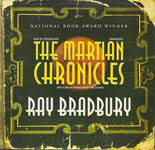
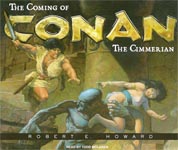
 The Coming of Conan the Cimmerian
The Coming of Conan the Cimmerian